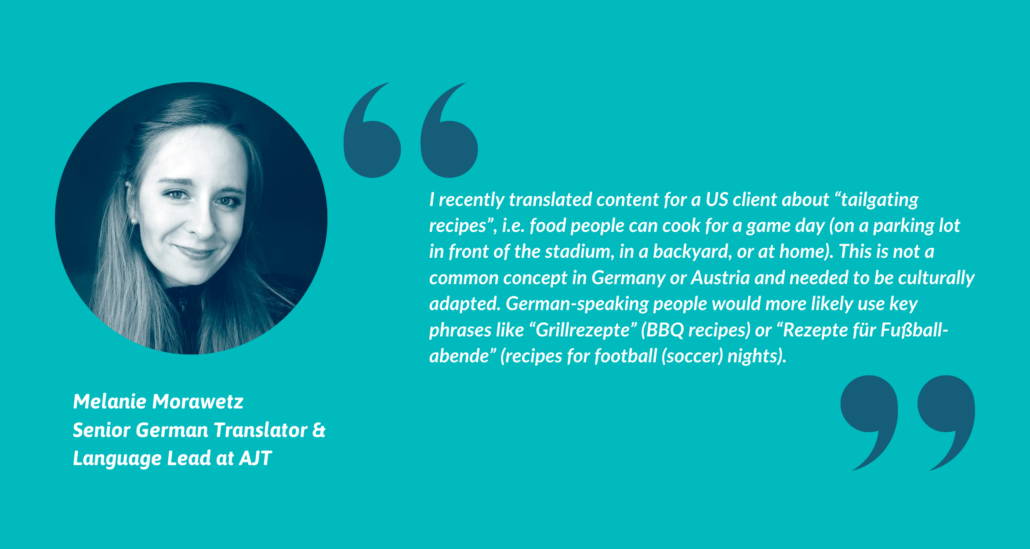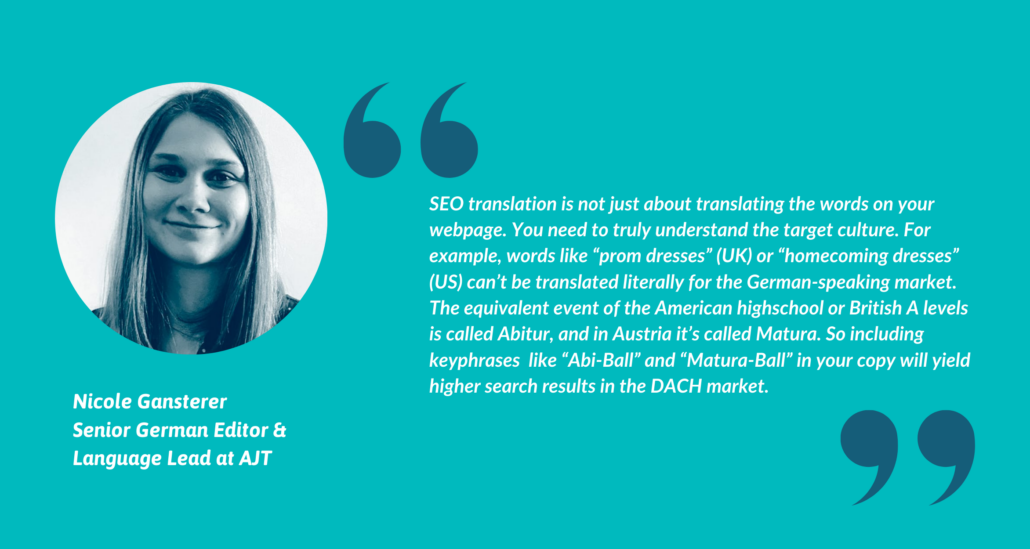The busy marketer’s guide to SEO translation
If you’re planning to localise your website and marketing content for new markets and languages, SEO translation is probably high on your list of priorities. How you first appear when you enter that new market is crucial – no brand wants to confidently launch themselves only to find that they’re missing out on search volume or appearing next to the wrong competitors because their SEO terms are tailored to the wrong market.
But if you’ve not worked with SEO translation before, you might not be sure on what exactly it is. Is it just translating keywords from one language to another? Do you need to research new keywords for each new market? To help you understand the process a little more, we’ve put together this quick step-by-step guide to what SEO translation looks like and how it fits with your wider localisation strategy.
Keyword research
Much like SEO in general, SEO translation projects start with SEO keyword research in your target language. It might be that some keywords from your source language can be translated directly, or it might be that some have to be tweaked or replaced depending on what consumers in the new market are searching for. Sometimes the changes can be as nuanced as consumers searching for the plural of a term in France and the singular in Italy.
At the same time, it’s important to look at what competitors come up in your target market when your original keywords are plugged in. This is all part of better understanding what terms you need to target, because if the keywords from your native market bring up an unexpected list of competitors, it’s a good sign that you’ll need to tweak the search terms you’re aiming for.
This is also about digging into the search intent behind those keywords. Take eco-friendly or recyclable packaging, for example.
In the German market, brands might see a lower search volume for products with those terms compared to the UK. This isn’t because German consumers don’t care about sustainability – quite the opposite. Rather it’s a case that recycling has a much longer history in Germany than in the UK, so if people are searching less for “moisturiser with recyclable packaging” it might be because they take it as a given that the product will be eco-friendly.
What that means is that if you want to market your product’s sustainability credentials, you might have to focus on different elements for different markets.

Keyword mapping
After the keyword research is done, the next step is to decide what keywords you want to focus on in your SEO strategy. This involves going over the keyword research you’ve done and working out which ones are most important for where you want to rank and compete in the new market.
Keyword mapping then just means taking the 10 or 20 keywords you’ve chosen to focus on and plotting out how they’re going to appear throughout your site. It’s a job of ensuring that the most relevant, high-traffic keywords for your brand appear in the right places like URLs, page titles, meta descriptions and on-page content.
Implementing keywords in localised content
Now that you have your key search terms and know where they need to be placed on your site, it’s time to implement them as part of your general localisation campaign.
This might sound like a simple case of slotting the right words into the right URLs and page titles, but there’s a little more to it than that. It’s also about making sure that you have the right content clusters built around those keywords to funnel traffic towards your core product pages. While some of it will be existing content that just needs to be localised, other topics might need to be created fresh.
With the existing content, you might find you don’t need to translate all of it. When translating a website, do you need to include every product or service page? Every blog post? Or are there certain sections of copy that don’t need to be on the new site, even if the rest of that page is being translated?
If there is any content on your site that doesn’t need to be translated – like the page for a product that isn’t available in the Netherlands, or a blog that’s only relevant to UK readers – it’s best to know that before you start translating those pages and peppering them with keywords. Not only will it help you avoid harming your domain authority with irrelevant content, but it will also mean you’re getting more value out of your translation partner.

Track your performance
Implementing your localised keywords isn’t the end of the SEO translation process. Just as you would with untranslated SEO, it’s now time to track how your pages are performing and look for any trends or links between those stats and how your keywords are implemented.
Remember that it takes time to build up domain authority in a new market, especially when you’re pitting yourself against established competitors. Your site’s performance will also depend on your general localisation strategy, and how you maximise exposure through your other marketing channels like content and social media.
Where there are gaps, build pillars
As you go forwards, think about where there are any gaps in your keywords and content, and where you can build out content pillars to close those gaps.
You might have already identified these gaps during the initial keyword research phase, or you might discover some when you start tracking and analysing your page performance. It’s also worth thinking about what current events or topics are interesting to consumers in your target market – like new legislation or upcoming fairs, events and trade shows – that you wouldn’t have otherwise covered in your original language content.
To find out more about how we can help with international SEO translation and multilingual keyword research, please do get in touch.
